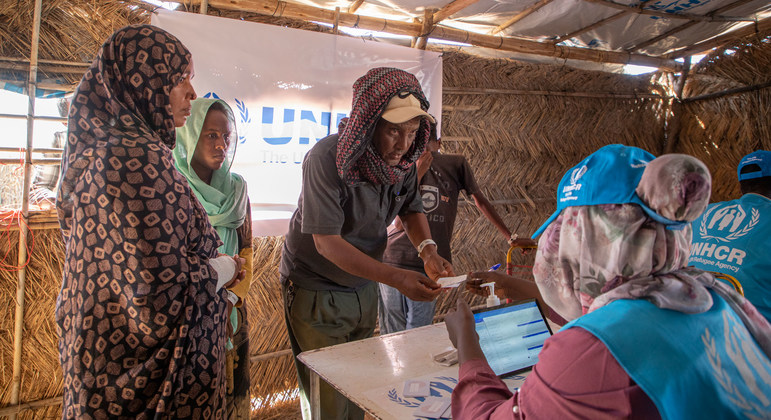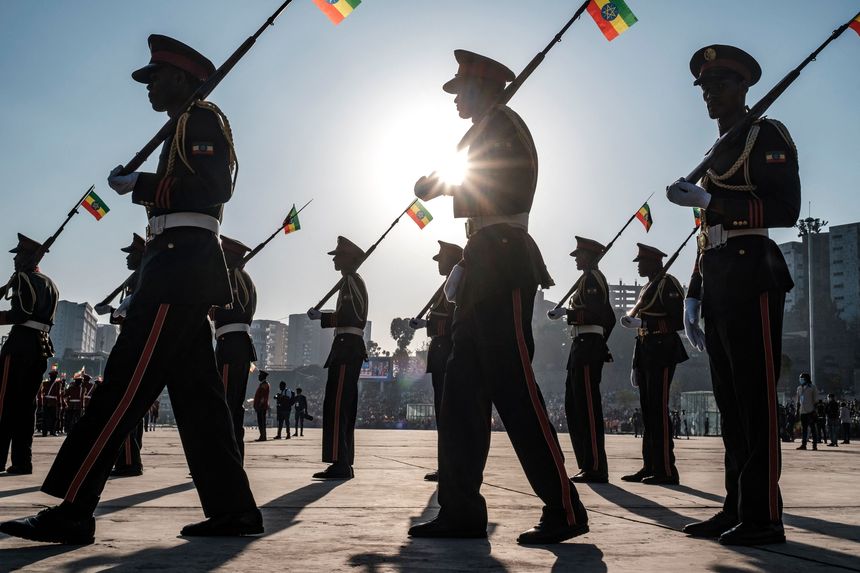For one year, Ethiopia has been at war with itself. What started as a “police operation” has turned into a full blown humanitarian crisis that risks disintegrating an already divided country and overturning economic gains accrued over the last two decades.
Unlike many wars, the chronology of the Ethiopian civil war is widely agreed upon by all parties. The seeds of the conflict were planted on November 6, 2020, when Prime Minister Abiy Ahmed – a Nobel Peace Prize winner – launched a military invasion into Tigray. Abiy justified the move to declare war against his own people as a police operation meant to root out rebellious leaders of a community that had dominated Ethiopia’s politics and governance since the 1990s.
Within days, Ethiopia’s federal army, with support from its former-enemy-turned-ally Eritrea, swept through the region pushing the Tigray Peoples Liberation Forces (TPLF) into hiding. The government cut off the region’s telecommunications and road networks. Reports of mass atrocities and rape began emerging. Bodies of victims appeared in rivers that straddle the country and its western neighbor Sudan.
Abiy’s government was also accused of carrying out mass starvation as a counter insurgency strategy, evoking painful memories of 1984 when Colonel Mengistu Haile Mariam purposefully caused famine in Tigray to quash the rebellion against his Marxist-Lenist government. According to the United Nations, the war in Ethiopia has claimed tens of thousands of lives and displaced at least 1.9 million people. 400,000 people in Tigray are said to be living in “famine-like” conditions.

The costs of the war are also being felt on the economic side. Ethiopia is believed to have lost $2.5 billion and Abiy’s vision for economic prosperity is now a mirage. Whether he will be around to fulfill it is another question.
“Well, I know for a fact that many investors are worried and are concerned about the situation in Ethiopia. This conflict wasn’t supposed to take a year, even more. It was supposed to have ended back in December, but it has really impacted the nation,” Samuel Getachew, an independent journalist based in Addis Ababa said.
“A few months ago, the Prime Minister estimated the lost resources in terms of what’s been happening is worth 500 billion birr, which is about just over $2 billion, not counting the weapons used. And much of money that was spent was to destroy infrastructures, and lives and so on, ” added Getachew.
There were times when the war appeared over, such as when Ethiopia’s government announced an unconditional cease fire after months of push-back to allow for humanitarian aid workers to reach Tigray. However, days later, the previously defeated TPLF, who had gone underground in the face of maximum pressure from the south (government forces) and north (Eritrean troops), emerged and retook the regional capital, Mekelle. Slowly by slowly, gains on the battlefield were reversed and now Ethiopia is stuck in a never ending war.
The war has metamorphosed into a battle to keep the capital and seat of power, Addis Ababa, from falling. But that task is more difficult now than ever after the Oromo Liberation Force teamed up with the Tigray Peoples Liberation Forces in an unlikely alliance. The Oromos are the country’s largest ethnic group and have been marginalized from power for a long period of time. Despite Abiy being an Oromo himself, community leaders have accused him of dereliction towards them.
Of more concern though is the capture of Kombolcha and Dessie towns, which risks leaving Addis in a blockade.
Ethiopia is a landlocked country that relies on Djibouti for 95% of it trade with the outside world. In February, Ethiopia launched the construction of a new railway line that will link its market town of Awash with Djibouti’s port.
The landlocked country currently has two rail lines that connect the interior with Port Djibouti, the Addis Ababa-Djibouti railway in the central-eastern part and the Awash-Kombolcha-Woldia railway in the north, that facilitate petroleum cargo services. The Awash-Kombolcha-Woldia railway is no longer operational after the seizure of Kombolcha by TPLF rebels.
“Ethiopia itself is 100 million people. This is a country that right before the world was becoming a role model in many ways in terms of how the economy was being run, in terms of how many people were running into invest,” said Maggie Mutesi, Managing Editor of Mansa Media Africa.
For two decades before Abiy came into power, Ethiopia’s economy had been growing at rates of over 10% leading it to surpass its southern neighbor, Kenya, as the largest economy in the region. Massive infrastructure projects like the Ethio-Djibouti electrified railway, and the Grand Ethiopian Renaissance Dam (GERD) were constructed, all with the aim of making the country a manufacturing hub. A model that led to some economists dubbing Ethiopia as “The African China.”
“Ethiopia is not just 100 million, it’s 110 million, at least. And it has one of the youngest people spending power, and middle class being created. So, while the conflict will be an issue for many, many years, the country still has a potential has numbers, has resources, and still has a functioning government compared to other African countries,” Samuel Getachew added.
If the war made trade in Ethiopia difficult, newly imposed sanctions will make it non-existent. Since inception, the Horn of Africa nation has been part of the AGOA trade program that provides sub-Saharan African nations duty-free access to the United States on the one condition that they meet certain eligibility criteria, such as eliminating barriers to U.S. trade and investment. The program allows 39 sub-Saharan African nation to export goods, which includes textiles and garments, to the United States free of duty, but is due to expire in 2025.
Ethiopia exported goods worth $239 million to the U.S. in 2019 under AGOA, which was more than 40% of its total shipments to the U.S, consisting of apparel and leather products. But until humanitarian conditions improve, Ethiopia can no longer enjoy these benefits.
“I try to look at situations like this from a humanitarian perspective, because when we think of the economic side, obviously, we’re talking money. And therefore, money is always something that we can always regroup and find.
However, when it comes to humanitarian as well as the human rights crisis, for me, that’s what comes to the fore more. It’s been a full year now and right now, we’re sitting in a stage where it’s spilling over into other areas of the country.” Dumi Jere, Founder and Managing Partner of Talanta said.

